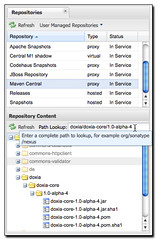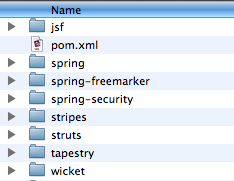In 2005 and 2006, I did "A Year in Review" entries. 2007 was the year I got divorced, which probably motivated me to write a bit less. This year I'm back and ready to spend the next few hours writing, copying/pasting and linking like a madman. Hope you enjoy!
 2008 was the year I traveled the world and developed a true passion for skiing. In January, my good friend Jason Miller moved back to Denver after quitting his job at Bear Stearns in NYC. We spent the first weekend in Nebraska working on Cletus's feedlot. The next week, my car stereo got stolen and I wondered if my bad knee would make it through the ski season (the good news is not only did I ski the rest of the season, but my knee healed itself over the summer).
2008 was the year I traveled the world and developed a true passion for skiing. In January, my good friend Jason Miller moved back to Denver after quitting his job at Bear Stearns in NYC. We spent the first weekend in Nebraska working on Cletus's feedlot. The next week, my car stereo got stolen and I wondered if my bad knee would make it through the ski season (the good news is not only did I ski the rest of the season, but my knee healed itself over the summer).
 At the end of January, the kids and I hiked to the top of Green Mountain and Don Brown made Maven not suck. Then I wondered if there was room for both Rails and Grails at a company and quickly learned both.
At the end of January, the kids and I hiked to the top of Green Mountain and Don Brown made Maven not suck. Then I wondered if there was room for both Rails and Grails at a company and quickly learned both.
February started fantastically with a 14" Powder Day at Steamboat. I wondered if there is no "best" web framework and reviewed Grails and Rails books. After spending an awesome weekend in Tahoe, I took the kids on The Ski Train and learned more about Selenium at Google.



This brings us to one of my favorite posts of all time. On February 28th, Jack got a bead stuck in his nose. After taking him to the ER and paying $800, we found out magic recipe for bead removal is to "hold one nostril and give him a CPR-type breath/blow into his mouth". The reason I love the post so much is it's solved the problem for other frantic parents when they Google for "bead stuck in nose". Whenever I get a new comment, it always makes me smile.
March started out with a
Powder Day at Whistler. I thoroughly enjoyed the rest of the weekend with good friends Jarvis and Korn Dog. After returning to Denver, I was allowed to blog about building a UI Frameworks Team at LinkedIn and posted my thoughts on Grails vs. Rails.
 In mid-March, I achieved an all-Mac family and traveled to Lake Chelan for my sister's birthday. Shortly after, The AppFuse Primer was released. At the end of the month, I attended TSSJS in Vegas and moderated a Web Framework Smackdown.
In mid-March, I achieved an all-Mac family and traveled to Lake Chelan for my sister's birthday. Shortly after, The AppFuse Primer was released. At the end of the month, I attended TSSJS in Vegas and moderated a Web Framework Smackdown.
In April, the LinkedIn Denver office opened and we all celebrated by attending the Rockie's Home Opener. The ski season came to an end and I wrote a howto for configuring Apache with mod_proxy and SSL on OS X. Then I discovered the JavaOne parties and wrote about running Spring MVC Web Applications in OSGi.
April ended with 82°F and May started with snow. I attended JavaOne (or at least the parties), released AppFuse 2.0.2 and figured out how to do extensionless URLs with the UrlRewriteFilter. The kids and I spent an afternoon in Rocky Mountain National Park and I did some coding in my backyard.




On Memorial Day, I enjoyed a liver-wrenching, Rockies-filled weekend with my sister her girlfriend Mya and Mr. Miller. I also contemplated making AppFuse Struts 2-specific.
June started with some mountain bike riding, planning some excellent vacations and getting a dream machine. I rode the annual trip to Big Head Todd at Red Rocks with Matt and Bruce. I took the kids on their first camping trip for Father's Day and had a blast. It took us several hours to find the campsite and my car kept starting all night long. It's sure to be a family tradition from now on.



The next weekend, I attended the American Craft Beer Fest in Boston. To end the month, I embarked upon Raible Road Trip #12 with Abbie, Jack and my Dad.
 In July, the bus project began and I posted pictures of the trip to Montana. This year, I hope to spend the whole month of July at the cabin. I bought an iPhone (one of my best technology-related purchases to date). OSCON was fun but the week after wasn't.
In July, the bus project began and I posted pictures of the trip to Montana. This year, I hope to spend the whole month of July at the cabin. I bought an iPhone (one of my best technology-related purchases to date). OSCON was fun but the week after wasn't.
 August revealed my favorite birthday present. I didn't blog much the rest of the month, revealing why later.
August revealed my favorite birthday present. I didn't blog much the rest of the month, revealing why later.
 Jack's Birthday Weekend was an outstandingly fun mixture of old friends and good Colorado beer. In September, I went to see the bus at MotorWorks, Abbie lost her first tooth and co-workers and I performance tested Memcached.
Jack's Birthday Weekend was an outstandingly fun mixture of old friends and good Colorado beer. In September, I went to see the bus at MotorWorks, Abbie lost her first tooth and co-workers and I performance tested Memcached.
What followed was wonderful. Miller and I headed to Oktoberfest for the Best. Vacation. Ever. We still talk about how much fun we had on that vacation. October finished with the Colorado Software Summit and a hunting trip to the cabin.
November was a crazy month. I got laid off and celebrated Abbie's birthday on the same day. Jack got a mohawk and I traveled coast-to-coast in the same week. To close the month, I announced what's next and headed to Costa Rica.

I had a fantastic time in Costa Rica and was impressed to see Abbie is a blue skier shortly after. I did a Dojo/Comet Research Project for a week and enjoyed the location of my newest client last week. A small adventure turned into a scary adventure and I enjoyed telling my stories to fellow Java Enthusiasts in Portland.
Phew! It's been quite a year. For 2009, I'm still hoping for what I tweeted shortly after Costa Rica. I'd like to visit 3 foreign countries, take 3 months of vacation and spend 1 month in Montana. I have technology goals too, but those aren't nearly as much fun to dream about. 
Happy New Year!
 I'm writing this post to talk about Nexus and how much I've enjoyed using it. I like Nexus for two reasons: it's aesthetically pleasing and it's well-documented. Another reason I really dig it is because I haven't had to touch it since I first configured it. Software that just keeps on humming is always fun to work with.
I'm writing this post to talk about Nexus and how much I've enjoyed using it. I like Nexus for two reasons: it's aesthetically pleasing and it's well-documented. Another reason I really dig it is because I haven't had to touch it since I first configured it. Software that just keeps on humming is always fun to work with.


























